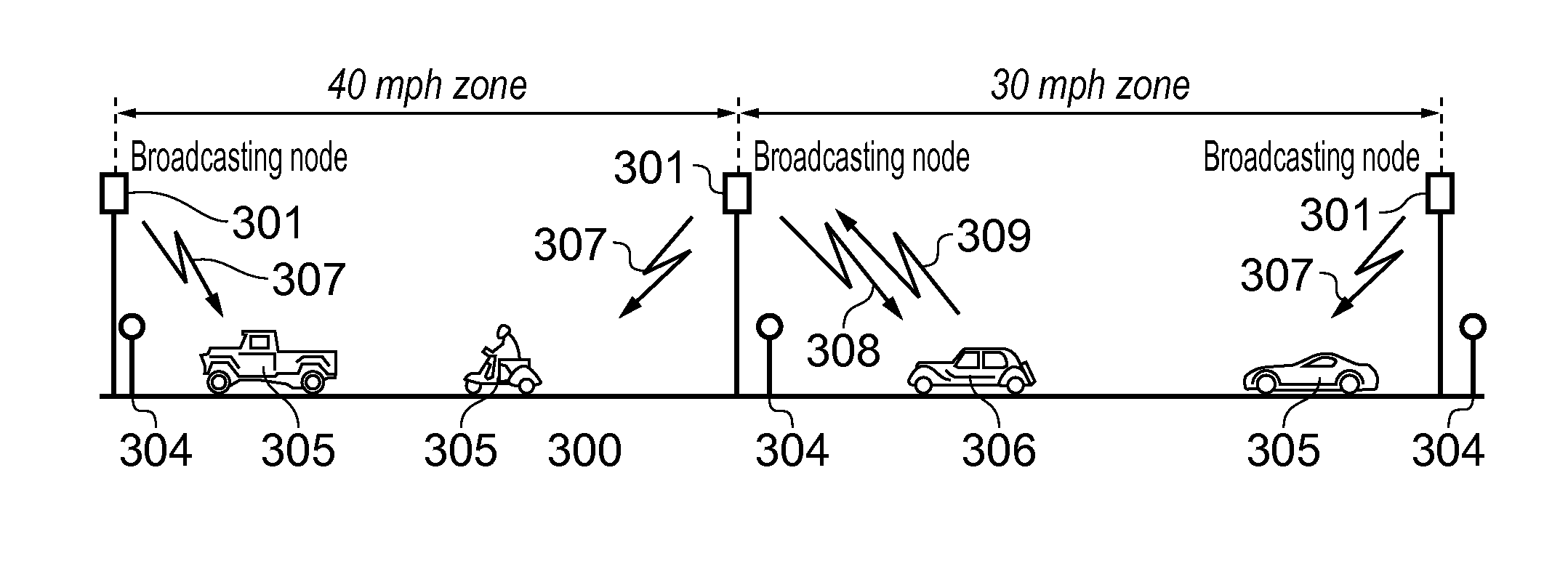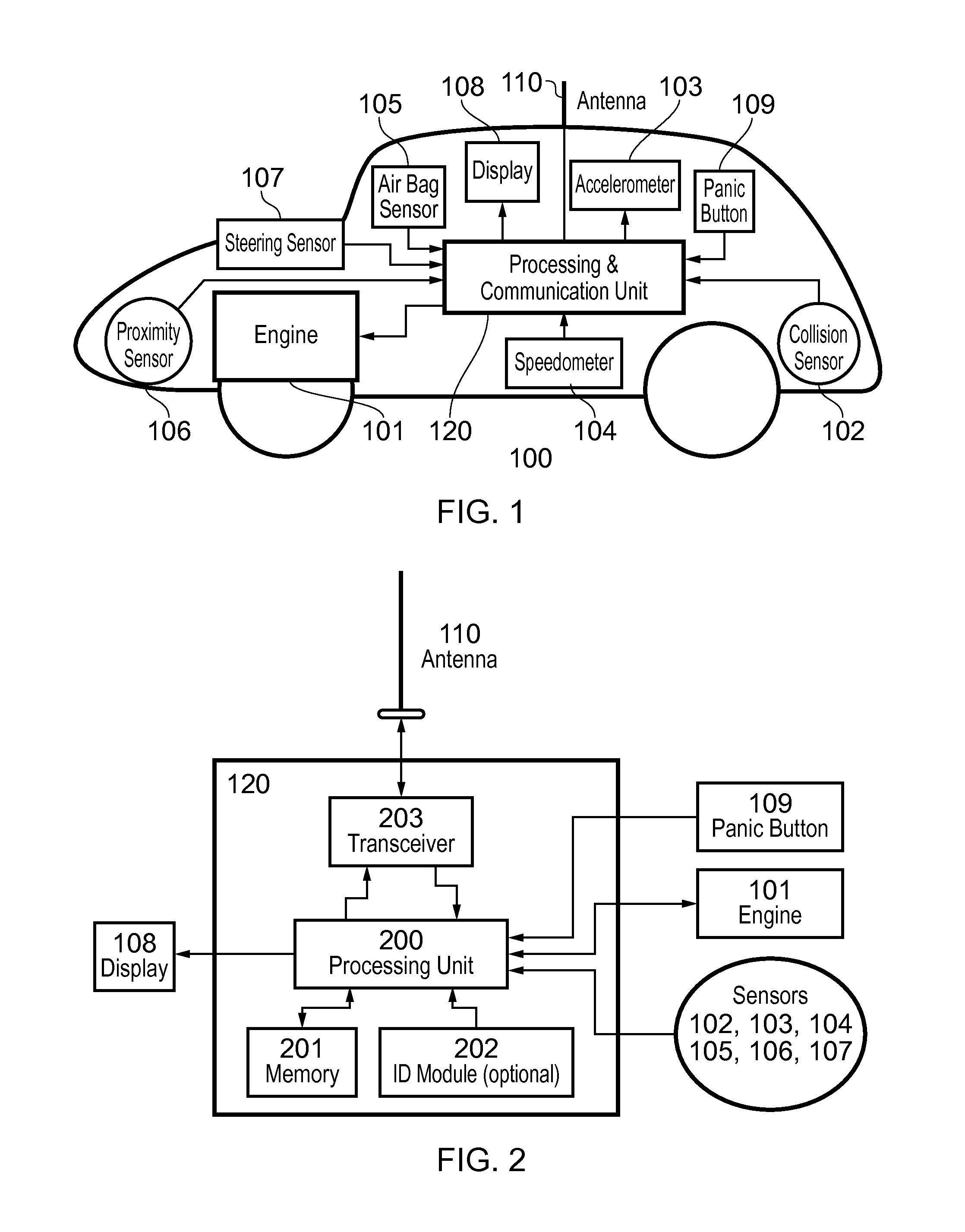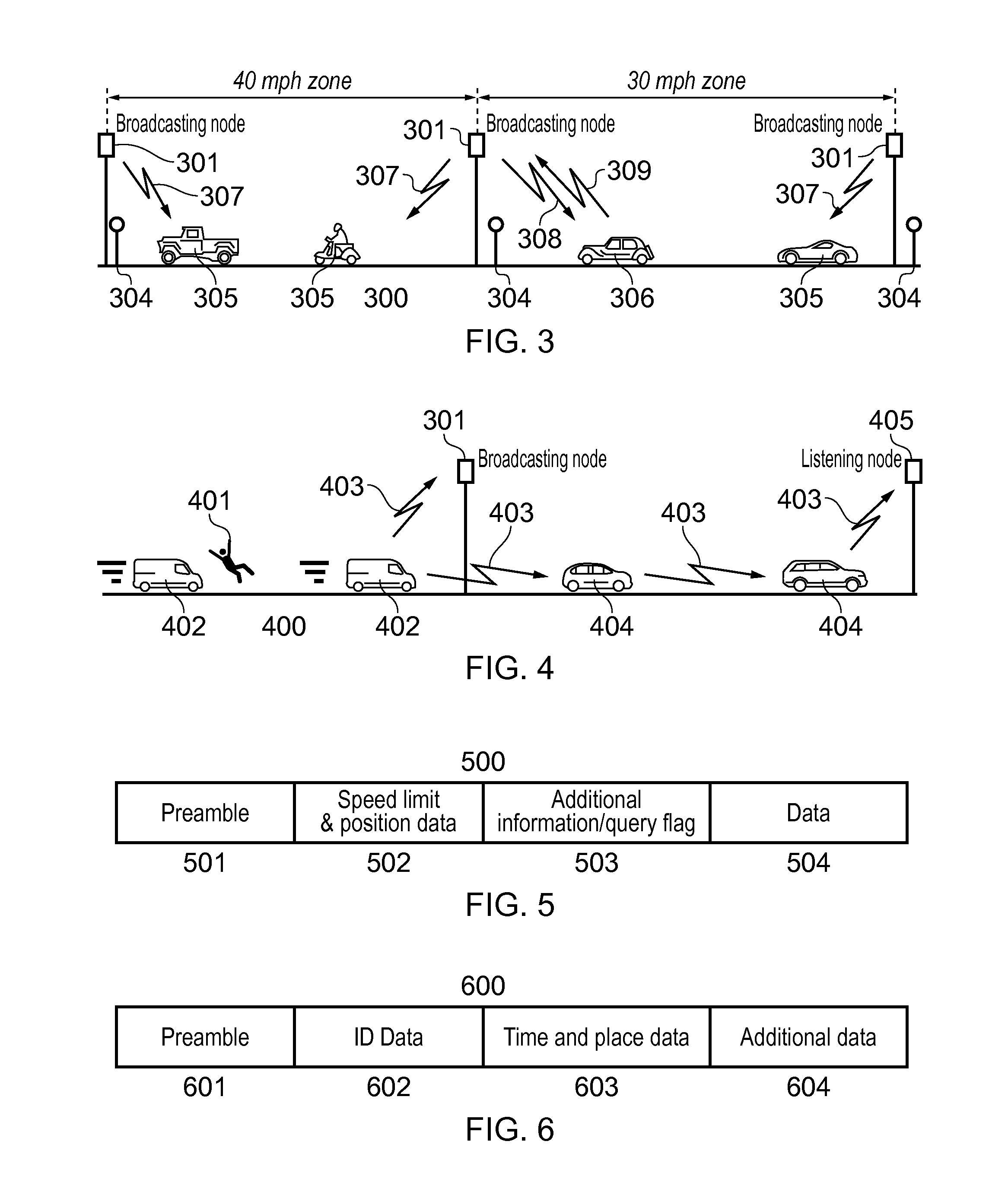Vehicular safety system
a safety system and vehicle technology, applied in the field of vehicles, can solve the problems of reducing reducing and affecting the safety of vehicles, so as to reduce the number of fatalities, improve the safety of roads, and reduce the cost of monetary costs
- Summary
- Abstract
- Description
- Claims
- Application Information
AI Technical Summary
Benefits of technology
Problems solved by technology
Method used
Image
Examples
Embodiment Construction
[0059]Reference will now be made in detail to the embodiments, examples of which are illustrated in the accompanying drawings, wherein like reference numerals refer to the like elements throughout. The embodiments are described below to explain the present invention by referring to the figures.
[0060]Traditional road safety schemes involve watchful police officers using radar / lidar technology and / or fixed / portable roadside cameras; the successful use of some of these measures depends on an adequate illumination of the scene and for this reason they are not reliable during night-time or in adverse weather.
[0061]Schemes have been proposed for automatically detecting and reporting events that can in principle endanger other road users such as speed limit violations; however, these do not take into account other situations that create a hazard, such as sudden decelerations or collisions with another vehicle or with a pedestrian. Conventionally, the tasks of locating hazards and supplying...
PUM
 Login to View More
Login to View More Abstract
Description
Claims
Application Information
 Login to View More
Login to View More - R&D
- Intellectual Property
- Life Sciences
- Materials
- Tech Scout
- Unparalleled Data Quality
- Higher Quality Content
- 60% Fewer Hallucinations
Browse by: Latest US Patents, China's latest patents, Technical Efficacy Thesaurus, Application Domain, Technology Topic, Popular Technical Reports.
© 2025 PatSnap. All rights reserved.Legal|Privacy policy|Modern Slavery Act Transparency Statement|Sitemap|About US| Contact US: help@patsnap.com



